Visit The Imambada Gulab Bari For A Delightful Experience In 2025
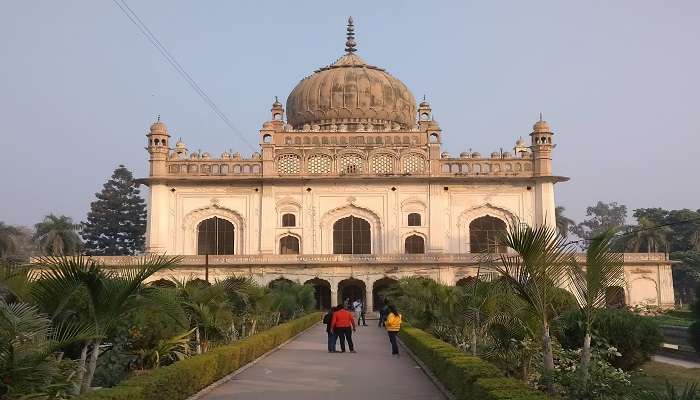
Also known as the Garden of Roses, the Imambada Gulab Bari is located in Vaidehi Nagar. It is the tomb of the third Nawab of Faizabad (known as Awadh in earlier times), Nawab Shuja-ud-Daula and his parents. This site has been listed under the Ancient Monuments and Archaeological Sites and Remains Act and special emphasis has been laid on Gulab Bari which is currently preserved as a part of national heritage. One of the most popular tourist attractions of Faizabad, the Gulab Bari is not only a charming lush green garden but also home to the magnificent tomb of Nawab.
About Of Imambada Gulab Bari
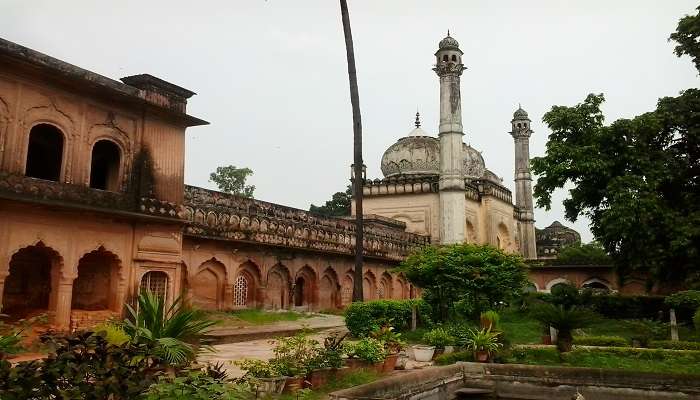
Translated as the ‘Garden of Roses,’ Gulab Bari houses the splendid tomb of Nawab Shuja-ud-Daula, the third Nawab of Awadh, who reigned from 1753 to 1775. The Nawab is believed to have himself commissioned the construction of this majestic and intricate structure as his tomb during his lifetime, accessible only through an imposing gateway. This monument is now designated as a national heritage site under the Ancient Monuments and Archaeological Sites and Remains Act, as Gulab Bari is a testament of Islamic architecture and remnants of the long-gone Nawabi era.
Regarding the meticulous design and planning of this structure, Gulab Bari is a beautiful building of fine architecture, standing in a garden surrounded by a wall, approachable through two huge gateways. Shuja-ud-Daula’s wife was the well-known Bahu Begum, who married the Nawab in 1743 and continued to reside in Faizabad only, her residence being the Moti-Mahal, another must-visit monument in Ayodhya. Close by at Jawahar Bagh lies her Maqbara, where she was buried after her death in 1816. It is widely considered as one of the finest buildings of its kind in Avadh, which was built at the cost of three lakh rupees (in those times) by her chief advisor Darab Ali Khan. A mesmerising view of the city will be obtainable from top of the begum’s tomb. Most of the Muslim buildings of Faizabad have been attributed to the genius of Bahu Begum. But unfortunately, beginning from the date of Bahu Begum’s death in 1815 till the annexation of Awadh, it was observed that the city gradually and ultimately fell into decay.
Must Read: Places To Visit In Uttar Pradesh
History Imambada Gulab Bari
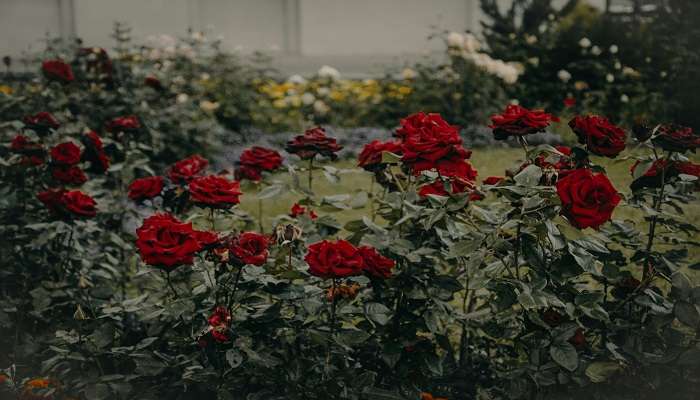
The enclosure not only contains the tomb of Shuja-ud-doula but also a mosque or Imambara, Shahi Hammam, Baradari and a well approached through triple-arched gateways. The Nawab has very actively constructed many huge & magnificent buildings in the city. Moreover, these buildings can be easily identified owing to the unique features of these buildings and their assimilative architectural designs. This magnificent building is the mausoleum of Nawab Shuja-ud-daula, surrounded by a well-laid out rose garden.
An Imambara, in general, is a shrine built by Shia Muslims for Azadari. The Imambara Gulab Bari is not only a significant religious site for Muslims, but it is also a testament of the syncretic Awadhi culture and architectural innovation of the time. Today, it proudly stands as one of the most famous monuments in Ayodhya. Shuja-ud-Daulah is also credited with commissioning the construction of Bara Imambara and the Rumi Darwaza in Lucknow, Uttar Pradesh. Gulab Bari is part of the other magnificent architecture that the Nawab brought in. Erected right at the centre of the Charbagh Garden, this two-storied tombstone, accompanied by the Imambara, is bracketed by endless lines of colourful roses that host both entries.
Location
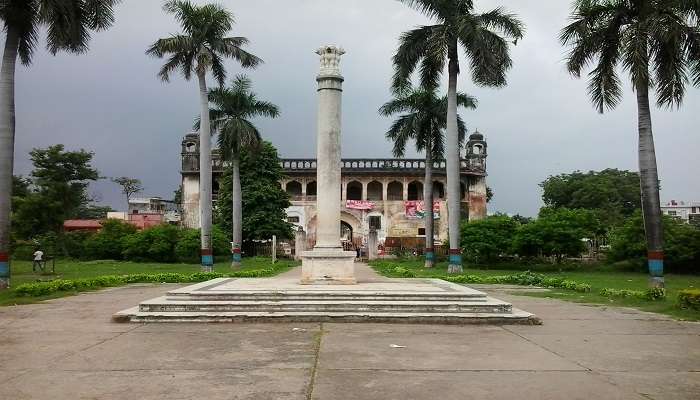
Located 5 km away from Ayodhya Railway Station, Gulab Bari and the including Imambara is a mausoleum nestled in the Vaidehi Nagar area of Faizabad, ranking among the heritage sites in Uttar Pradesh and featuring prominently in Ayodhya’s tourist attractions. This monument is open for the public from 4 am – 7 pm, all year round. It can be easily reached by taking a rickshaw from any part of the city or simply by walking.
Suggested Read: Places To Visit In Lucknow
Architecture Details
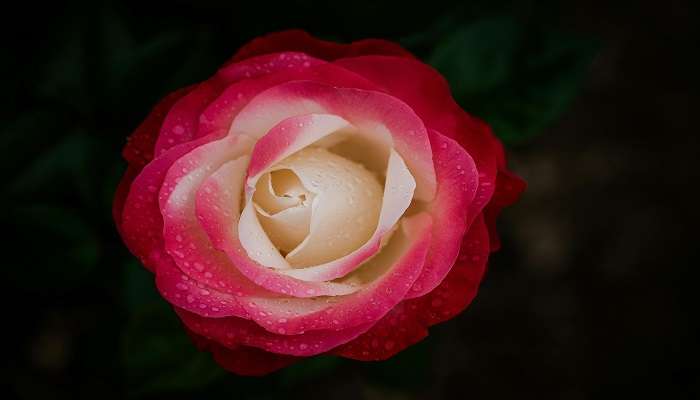
Constructed in the well-renowned Islamic architectural style, the tomb is a marvel in design. Surrounded by an enclosure wall adorned with plaster mouldings, the square double-storeyed mausoleum features an arched verandah on each side, and its upper storey boasts a three-arched facade with minarets at the corners. The central chamber’s dome is adorned with an inverted lotus and metal finial.
Gulab Bari was the centre to host any and every significant religious function during the Nawab’s reign. An enduring testament to the Islamic style of architecture, the imposing tomb is one of the best-designed monuments in Uttar Pradesh. As you walk to enter the garden, you are greeted by a large pillar with India’s National Emblem. A well-maintained walkway lined with swaying coconut trees welcomes you on either side and leads you to an ancient arched gateway. To enter the garden, you need to pass through this imposing gateway, as intended by the Nawab back in the day. The garden also houses the Imambara, which is a beautiful mosque, and a small watchtower that stands right next to the mosque. Walking through the arched passages of the tomb makes for a fascinating experience.
Further Read: Places To Visit In Allahabad
Now you have complete information about Imambara and the Gulab Bari along with the surrounding places of interest and that gives you a list of reasons to visit the holy city of Ayodhya. Make sure you plan your trip to Ayodhya at the earliest and don’t forget to explore all the historical and spiritual marvels of this city. Don’t miss out on exploring these wonders and book your tickets now!
For our editorial codes of conduct and copyright disclaimer, please click here.
Cover Image Credit: Prajjwal3959 for Wikimedia Commons
Frequently Asked Questions About Imambada Gulab Bari
What famous sites can be explored near Garden of Roses?
The most popular sites that can be explored within a close vicinity are Moti Mahal and Bahu Begum Ka Maqbara, the residence and tomb of Bahu Begum (the Nawab's wife) respectively, which are definitely visited by those who visit the enclosure of the Nawab's tomb. Adding to that, since the holy city of Ayodhya has been a centre of religious tourism, it houses many religious sites that have become popular tourist destinations today. Some of the most visited temples near Gulab Bari are Raja Mandir, Nageshwarnath Temple and Treta ke Thakur Temple to name a few.
Is Gulab Bari a tourist spot?
Gulab Bari is not just any tourist spot that can be visited for a picnic but a place of worship and various cultural events. The locals treat it as a sacred place. It is said that the monument is discreetly connected to a boil in Lucknow and used to be a hiding place for the successors of the Nawab Shuja-ud-Daula. Today, this site is surely open to the public but the visitors have to ensure that the sanctity of the tomb is not compromised.
Why is Nawab Shuja-ud-Daula's tomb called Gulab Bari or Garden of Roses?
It is widely believed among the locals that the fragrance of roses in the Gulab Udyaan brought relief to the busy mind of the nawab and allowed him to work and make decisions. That is why, when the Nawab himself commissioned the construction of his tomb's structure, he was very particular about the tomb and Imambara being bracketed by endless lines of colourful roses.
Did the same Nawab commission the construction of Gulab Bari in Ayodhya and Rumi Darwaza in Lucknow?
Yes; Shuja-ud-Daulah, the Third Nawab of Awadh is the genius mind that commissioned the construction of Bara Imambara and the Rumi Darwaza in Lucknow and his own tomb in Ayodhya. Gulab Bari is part of the other magnificent architecture that the Nawab brought in during the time.
What is Shuja-ud-Daula known for?
Shuja-ud-Daulah, beyond his architectural acumen, is also known for his role in the Battle of Buxar, a battle that greatly impacted and completely transformed Indian history. He, teaming up with the forces of Mughal emperor Shah Alam II & Mir Qasim, Ruler of Bengal, was defeated by the British forces in one of the key battles that escalated the status of the British East India Company to a political power.
People Also Read:
Panch Mahal Safed Baradari Samthar Fort

As a Travel Content Writer, I live to conquer the world of globetrotting with words. With my unquenchable thirst for storytelling, I believe that my words will inspire you to travel around the world’s breathtaking landscapes. As for me, I am an unapologetic selenophile, who loves to wander around in a starry night!











